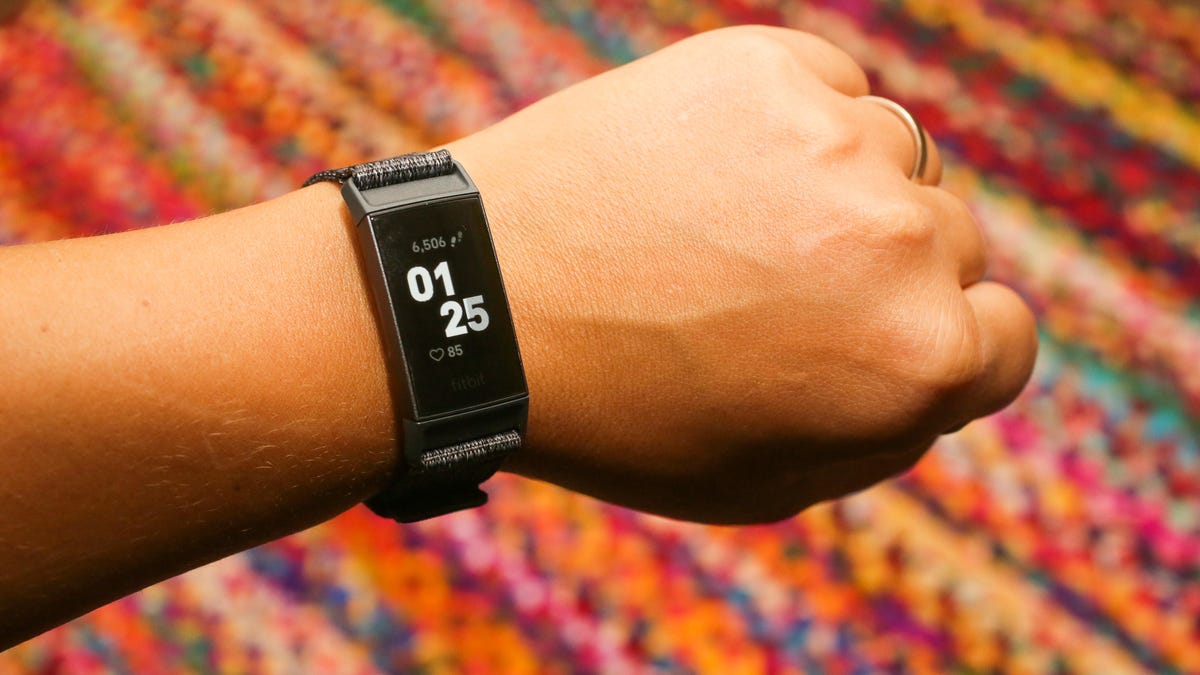Fitbit Charge 3 has arrived: Here's what's different vs. Versa
This could be the best all-around affordable fitness tracker. Here are my initial thoughts after a couple of days.

The newest Fitbit gets a little more smartwatchy, but stays slim.
Sliding into an October already full of watches and wearables, the Fitbit Charge 3 -- which hits stores today, starting at $149 (£130, AU$230) -- promises to be the company's best general fitness tracker. And yet: Fitbit already has a watch, the Fitbit Versa, that does a lot of the same things (and a bit more) for just $50 more.
Confused? Don't worry, I'm here to help.
I've only been wearing the Charge 3 for a couple of days, and a full review is coming. But here's what I can tell you in the meantime, based on my early experience so far.
Optional woven nylon band attached.
It's a comfy, basic-feeling fitness band. Unlike larger-screened watches, the Fitbit Charge 3 keeps to a thinner, vertical-screened look, just like its predecessor. The included rubber band feels super comfortable and comes in two sizes out of the box. Additional bands include a woven nylon one -- not bad, but I didn't like it as much as the Versa's woven watch band -- and a perforated rubber sports band, which is quite comfortable. I didn't try the Horween leather bands, because I wouldn't wear leather bands with a waterproof fitness tracker anyway.
The larger display and touchscreen make a difference. The larger grayscale OLED is crisp and easier to read, and shows more text for messages. The true touchscreen finally allows swiping between different app functions, or swiping up or down for notifications and fitness stats.
The side pressure-sensitive haptic button is really nice, and vibrations are strong. Instead of a physical button, you squeeze an indented area of the steel case to quickly access settings, or pause or stop workouts. The vibrations feel stronger than previous Charge trackers.
Fitbit Versa (left) versus Fitbit Charge 3 (right). Many similar features, but key differences.
Navigation is a little weird, though. Swiping to features like the timer, alarms, the breathe-relax mode, or even starting a workout feels like a lot of fiddling. It's easier to quick-start an exercise with the Versa.
It's waterproof, at last. This tracker is shower and swim-friendly, which the Charge 2 wasn't. That's a big deal, and matches the Ionic and Versa watches.
There are apps, but just a few. Call them modes or apps or whatever you like, but there's an Exercise mode, a Relax mode, weather, an alarm, a stopwatch and timer. Fitbit might add more apps in the future, but there isn't an app store like the Versa or Ionic.
There are watch faces, but just a few. Again, there are a handful of watch face styles that mix stats and time, which can be selected from the Fitbit phone app. But there aren't any others, unlike the hundreds of fun Versa options.
It doesn't have Fitbit's extra coaching app. I don't use Fitbit Coach and I'm not wild about subscription services, but it's not even accessible on the Charge 3. The Versa has a Coach app and a few free workouts included.
Fitbit's phone app remains a strong suit.
There's optional Fitbit Pay, but no music storage or remote playback. A $20 step-up edition includes NFC-based Fitbit Pay and an extra strap, which isn't a bad deal. Fitbit Pay doesn't work with as many banks as Apple Pay, Google Pay and others, though... it still doesn't work with my credit card, which is from a pretty mainstream US bank. Also, for music-workout people, keep in mind that unlike the Versa and Ionic, which can store MP3s sideloaded from a PC, and also do basic remote-control music playback from music on a phone, the Charge 3 doesn't have any music support at all.
Heart rate's been a little weird on my review unit so far. As always, getting always-on heart rate stats is helpful... but so far the readings run high. I love Fitbit's instant heart rate readings. But my resting heart rate is reading a lot higher so far than my actual physical pulse, or what the Apple Watch on my other wrist tells me. I'll report more on this as I keep wearing the Charge 3. It's hard to tell what's going on.
Nowhere near as feature-rich as the Apple Watch, but it does have better battery life and sleep tracking. The Apple Watch Series 3 has music, optional cellular, a speakerphone, headphone support, a microphone for Siri and the Series 4 even has an EKG and fall detection. But the Apple Watch costs more ($270 and up), only has a day and a half of battery, and doesn't have baked-in sleep tracking. The Fitbit Charge 3 promises seven days of battery life (so far three and counting), and can track sleep, and it costs far less.
A full review will come in the following week or so once we've tested more.
Fitbit Versa review: $199 and mostly great.
Best smartwatches for 2018: Hand-picked by CNET's editors.

